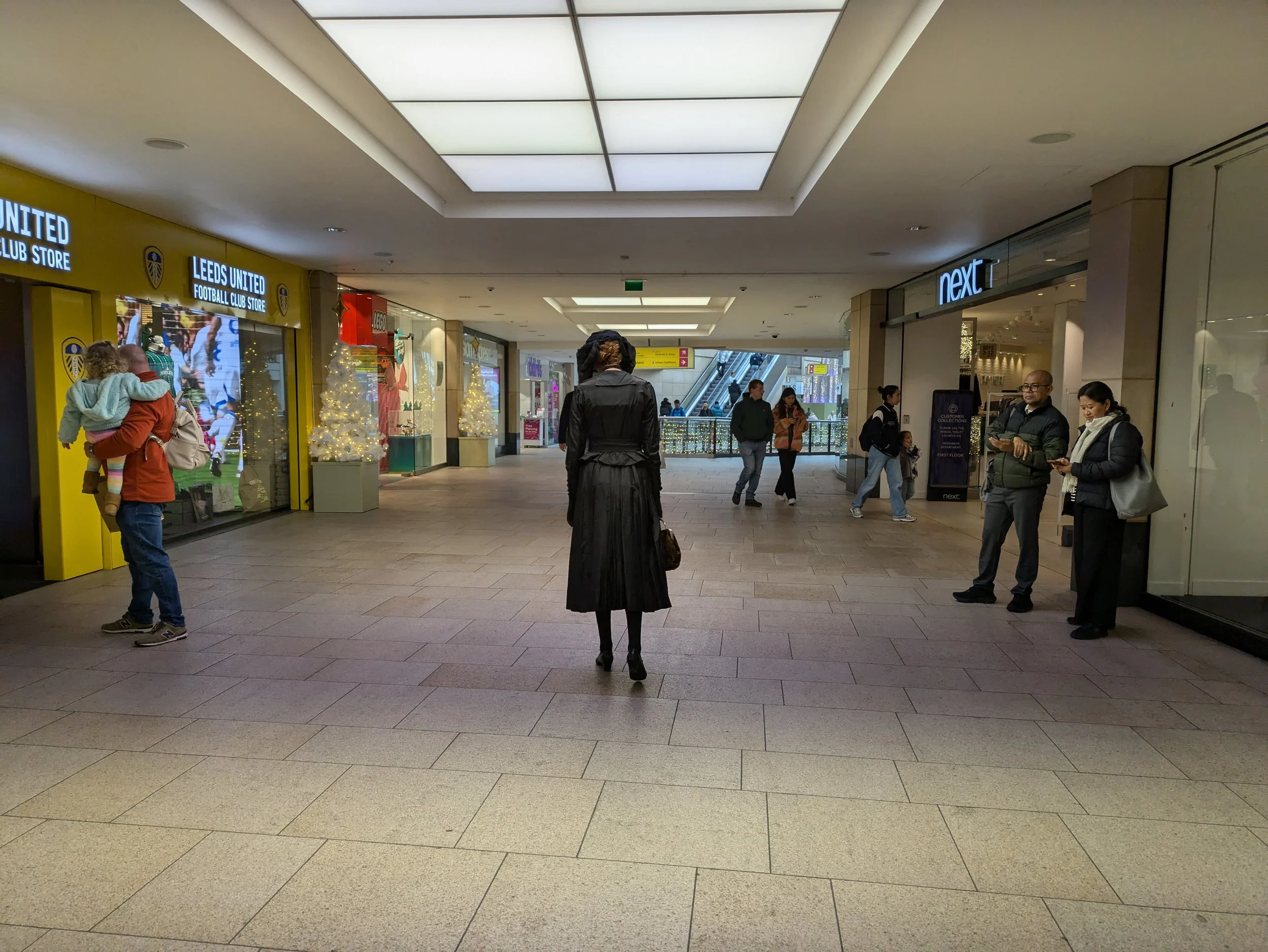They Didn’t Believe Me (24)
Performance, Leeds City Centre, 10th November 2024
At 11am on Remembrance Sunday a woman veiled in black moves silently through the foyer of Leeds Train Station, staff lined with heads bowed. She stops, looks into the faces of gathered travellers before processing the streets of Leeds, she turns occasionally expecting to see a familiar face only to be disappointed. Any man who approaches her is presented with a white feather, teenagers on buses are an easy target for her campaign.
This piece is a direct response to Jeremey Deller‘s artwork “We’re here because we’re here”, commissioned to mark the centenary of The Battle of The Somme. Similarly titled “They didn’t believe me” is also named after a song from 1914, which had different lyrics at home and in the trenches.
I workshopped my ideas for this performance with Douglas Black, my mentor from the UNBOUND programme. We discussed possible issues around reception, the benefits of a limited audience and how a performance can be deemed to be ‘successful’. It was important to me, as Deller’s 2016 piece was exclusively from a male experience of war, to create something to tell something from the perspective of women during WW1.
I spent hours reading mile upon mile of microfilmed newspapers until I found a story specific to Leeds during the period, two stood out to me: The Barnbow Lasses and Horace Ilse.
35 women were killed when Barnbow munitions factory exploded in 1916. Apart from an erroneous female name on Chapel Allerton’s war memorial, the only memorial dedicated specifically to these women lays on the site of the factory: inaccessible to most and left forgotten.
Horace Ilse was still a child when war broke out, looking older than his age he was given a white feather while travelling on a Leeds Tram. To his family’s dismay he joined up underage and died in The Trenches.
I decided to pursue the story of Horace, who I felt was a very real representative of the ‘Lamb to the slaughter’ narrative often given to WW1, something I felt proportionally represented more people from the period and a message clearly understood by the public today. The white feather is a clear symbol with clear interpretations, both cowardice and peace. I found myself interested in the women who would have accosted Horace and boys like him, what motivated them? How would a woman feel knowing she had played a proactive part in a child’s death? Could a woman be motivated to start labelling other men as cowards if she herself had lost someone?
With thanks to Jasmine Hale for recording this performance and acting as my minder.



